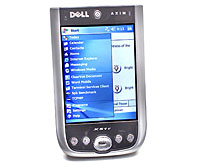 Dell has announced three updates to its popular Axim PDA series, headed up by the powerful, VGA-enabled X51v.
Dell has announced three updates to its popular Axim PDA series, headed up by the powerful, VGA-enabled X51v.
The flagship model is physically very similar to their existing X50v, but runs on the new Microsoft Windows Mobile 5.0 operating system and comes with more memory and powerful features.
With a hefty 624 MHz Intel PXA270 processor lurking inside, the Dell Axim X51v incorporates a 3.7-inch 640 x 480 VGA TFT display, powered by an Intel 2700G Multimedia Accelerator offering 16 MB of dedicated video memory.
Onboard storage comes in the form of 256 MB of non-volatile memory, with expansion taken care of by SDIO compatible SD/MMC and CompactFlash Type II card slots.
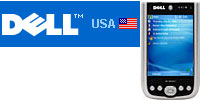 One big difference from previous models is the use of non-volatile memory, which means that the new Axim X51v uses RAM exclusively for running programs and stores all programs and data in flash.
One big difference from previous models is the use of non-volatile memory, which means that the new Axim X51v uses RAM exclusively for running programs and stores all programs and data in flash.
The good news is that this results in extended battery life and means that data stays intact when the battery goes dead, but there is a downside.
Because flash memory is slower than RAM, activities that involve shunting a lot of data between storage flash and operational RAM (like opening files or rebooting the device) become slower.
PC Magazine found that opening times on large Word documents were much slower than on earlier models, taking up to 18 seconds compared to the nippy 3 seconds on the X50v.
They also found that file writes to the default storage directory took three times as long as on the X50v, and reads took nearly eight times as long, but the machine performed well with video files and opening ClearVue PDF, Pocket Excel/Excel Mobile and Pocket Internet Explorer/IE Mobile documents.
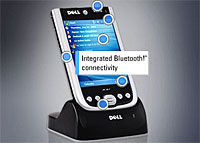 Connectivity is taken care of with integrated Bluetooth 1.2 and Wi-Fi 802.11b support, with WPA and LEAP security for the latter.
Connectivity is taken care of with integrated Bluetooth 1.2 and Wi-Fi 802.11b support, with WPA and LEAP security for the latter.
Dell have bundled in a generous software bundle of games and applications including 3D mini-golf, Geo Rally 3D and full versions of the Battery Pack Lite utility and the excellent Resco Picture Viewer.
Looking down the range, Dell’s new Axim X51 and X51s devices offer 520 and 416 MHz processors respectively with smaller 3.5-inch QVGA displays and no Wi-Fi 802.11b connectivity in the X51s.
The Axim X51v is now available in the US and Europe, priced $500 USD (£271, €390) with the X51 and X51s knocking out for $400 USD (£220, €340) and $300 USD (£166, €280) respectively.
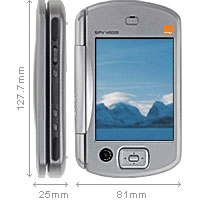 Orange has become the first UK operator to sell an own-brand Windows Mobile handset operating on 3G networks, with the launch of the SPV M5000 smartphone.
Orange has become the first UK operator to sell an own-brand Windows Mobile handset operating on 3G networks, with the launch of the SPV M5000 smartphone.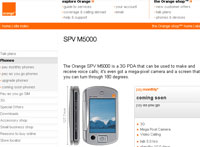 The silvery device stuffs in a loudspeaker and microphone for making conference calls, with a built-in modem and fax capability letting users blast off emails and check their appointments whilst making calls on the hands-free kit.
The silvery device stuffs in a loudspeaker and microphone for making conference calls, with a built-in modem and fax capability letting users blast off emails and check their appointments whilst making calls on the hands-free kit.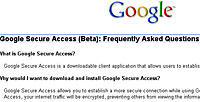 Are Google about to launch a free wireless Internet service?
Are Google about to launch a free wireless Internet service?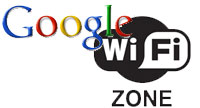 Q. “Is there a fee for using Google Secure Access? A. No, Google Secure Access is free.”
Q. “Is there a fee for using Google Secure Access? A. No, Google Secure Access is free.”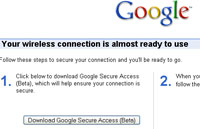 So far, Google have only introduced two wireless access points in Silicon Valley, at a pizzeria and a gymnastics centre, but it has been reported that the company were in talks with San Francisco officials about setting up public wireless networks in the city (Google currently share a single access point in Union Square in partnership with Feeva.)
So far, Google have only introduced two wireless access points in Silicon Valley, at a pizzeria and a gymnastics centre, but it has been reported that the company were in talks with San Francisco officials about setting up public wireless networks in the city (Google currently share a single access point in Union Square in partnership with Feeva.)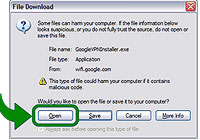 Although rolling out a nationwide Wi-Fi service would be a formidable task, with Google’s energy, enthusiasm (and zillions of $$$), it’s entirely possible and would no doubt be supremely popular.
Although rolling out a nationwide Wi-Fi service would be a formidable task, with Google’s energy, enthusiasm (and zillions of $$$), it’s entirely possible and would no doubt be supremely popular. British airline bmi and TAP Air Portugal have announced that they will be allowing passengers to use their own cellphones on commercial flights within western Europe from late next year.
British airline bmi and TAP Air Portugal have announced that they will be allowing passengers to use their own cellphones on commercial flights within western Europe from late next year.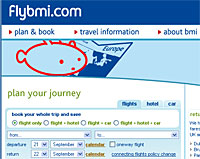 “During that three months, we’ll all be evaluating how it’s going, what the usage is, how we handle the crew issues and so on,” he added.
“During that three months, we’ll all be evaluating how it’s going, what the usage is, how we handle the crew issues and so on,” he added. The company is also looking to sell its services to other airlines and hopes to clear regulatory hurdles for air traffic within Europe some time next year.
The company is also looking to sell its services to other airlines and hopes to clear regulatory hurdles for air traffic within Europe some time next year. Much as we love the idea of firing off texts while we’re quaffing champagne at 20,000 feet and chatting to earthbound chums, it’s worth pointing out that the demand for in-flight mobile calls
Much as we love the idea of firing off texts while we’re quaffing champagne at 20,000 feet and chatting to earthbound chums, it’s worth pointing out that the demand for in-flight mobile calls 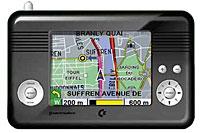 Mention the name “Commodore” to old skool gamers of a certain age, and you might see a tear welling up in their eyes as they recall long, blissful hours playing Frontier Elite, Sensible Soccer and Lemmings on the legendary gaming platform.
Mention the name “Commodore” to old skool gamers of a certain age, and you might see a tear welling up in their eyes as they recall long, blissful hours playing Frontier Elite, Sensible Soccer and Lemmings on the legendary gaming platform.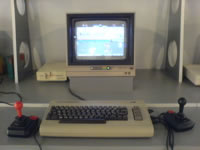 Codenamed ‘The Navigator Combo’, the Windows CE-based handheld comes with a 30GB hard drive (preloaded with maps), a big 3.6in touch-screen display and an integrated GPS receiver, all packed into a refreshingly chunky case.
Codenamed ‘The Navigator Combo’, the Windows CE-based handheld comes with a 30GB hard drive (preloaded with maps), a big 3.6in touch-screen display and an integrated GPS receiver, all packed into a refreshingly chunky case.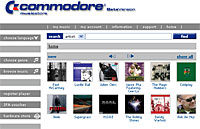 Videos can also be downloaded from the Internet or transferred from PCs via USB 2.0, or stored on SD memory cards.
Videos can also be downloaded from the Internet or transferred from PCs via USB 2.0, or stored on SD memory cards. The two companies presented a wide range of shiny new consumer electronic products for consumers and the retail market, including MP3/MP4-players, C64 gaming joysticks, multimedia download dispensers and home media centers.
The two companies presented a wide range of shiny new consumer electronic products for consumers and the retail market, including MP3/MP4-players, C64 gaming joysticks, multimedia download dispensers and home media centers.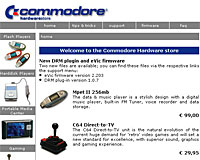 Building up to the required mutual backslap, he added, “Therefore the management of Yeahronimo and SupportPlus believe it is an obligation, when using the Commodore name, to continue offering the electronics consumer with products that have a high-quality and are attractive in price. SupportPlus already has showed they are an excellent partner in the historic re-launch of Commodore.”
Building up to the required mutual backslap, he added, “Therefore the management of Yeahronimo and SupportPlus believe it is an obligation, when using the Commodore name, to continue offering the electronics consumer with products that have a high-quality and are attractive in price. SupportPlus already has showed they are an excellent partner in the historic re-launch of Commodore.”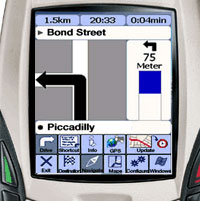 GetMeThere.co.uk has launched what they are claiming is the first, free to install, Pay-as-you-go Mobile Satellite Navigation solution in the UK.
GetMeThere.co.uk has launched what they are claiming is the first, free to install, Pay-as-you-go Mobile Satellite Navigation solution in the UK. The system offers a comprehensive suite of features, including full turn by turn navigation, voice commands, traffic avoidance, auto-zooming maps as a junction approaches, hands free use, European road network coverage with full address, house number, street and postcode search.
The system offers a comprehensive suite of features, including full turn by turn navigation, voice commands, traffic avoidance, auto-zooming maps as a junction approaches, hands free use, European road network coverage with full address, house number, street and postcode search. Jon West, Director of GetMeThere.co.uk said “With over 4.5m navigationsystems expected to be sold this year across Europe, TARA Mobile SatNav has arrived just in time to provide a low cost, quality solution for the intelligent motorist. With GPS devices now available at around the £50 ($90, €74) mark, SatNav has become a must have for all motorists”.
Jon West, Director of GetMeThere.co.uk said “With over 4.5m navigationsystems expected to be sold this year across Europe, TARA Mobile SatNav has arrived just in time to provide a low cost, quality solution for the intelligent motorist. With GPS devices now available at around the £50 ($90, €74) mark, SatNav has become a must have for all motorists”. Following their free-for-24-hour offer at the end of August, Opera Software has permanently removed the ad banner and licensing fee from its award-winning Web browser.
Following their free-for-24-hour offer at the end of August, Opera Software has permanently removed the ad banner and licensing fee from its award-winning Web browser.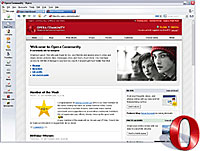 Previously, Opera was only available free if users were prepared to put up with a distracting ad banner stuck on the top of the browser interface, with the option to shell out for a $39 (£21.60, €32) licensing fee to remove the thing and receive premium support.
Previously, Opera was only available free if users were prepared to put up with a distracting ad banner stuck on the top of the browser interface, with the option to shell out for a $39 (£21.60, €32) licensing fee to remove the thing and receive premium support.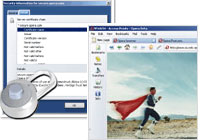 It seems a bit of a gamble to us – both IE and Firefox are also available free of charge and without a huge marketing campaign we can’t see how they’re going to get enough users to switch from their far better known rival products.
It seems a bit of a gamble to us – both IE and Firefox are also available free of charge and without a huge marketing campaign we can’t see how they’re going to get enough users to switch from their far better known rival products.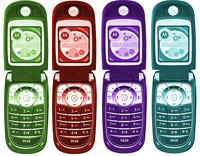 There are now more than 2 billion mobile phone subscribers in the world, according to a report by Wireless Intelligence, a collaboration between analyst house Ovum and the GSM Association.
There are now more than 2 billion mobile phone subscribers in the world, according to a report by Wireless Intelligence, a collaboration between analyst house Ovum and the GSM Association.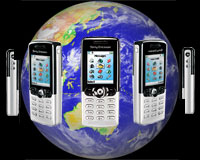 Not surprisingly, the bulk of the growth is happening from large, less well-developed markets such as China, India, Eastern Europe, Latin America and Africa.
Not surprisingly, the bulk of the growth is happening from large, less well-developed markets such as China, India, Eastern Europe, Latin America and Africa. Once again, the UK has grabbed the number one slot on Top Of The Bots, possessing the world’s highest proportion of known bot-infected computers.
Once again, the UK has grabbed the number one slot on Top Of The Bots, possessing the world’s highest proportion of known bot-infected computers. Symantec puts this down to the huge rise in broadband subscriptions coupled with the delays in software patches for operating systems and software being made available.
Symantec puts this down to the huge rise in broadband subscriptions coupled with the delays in software patches for operating systems and software being made available.